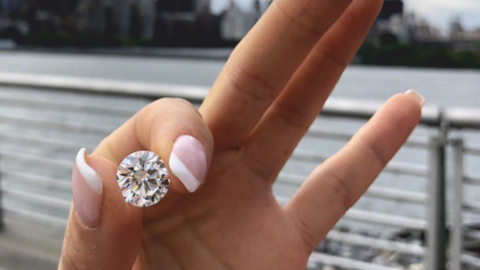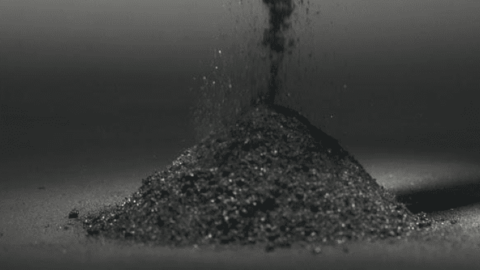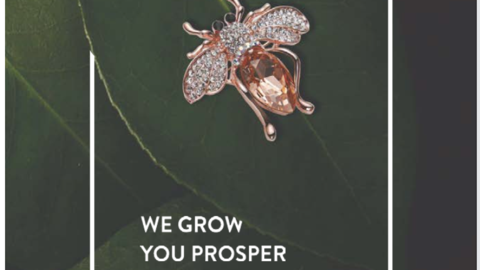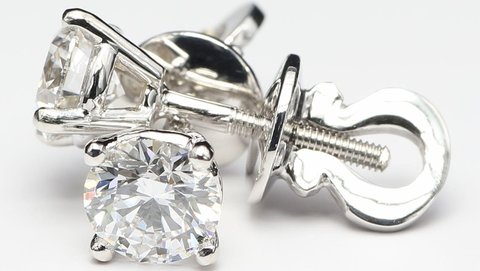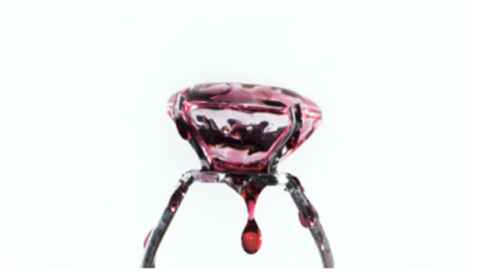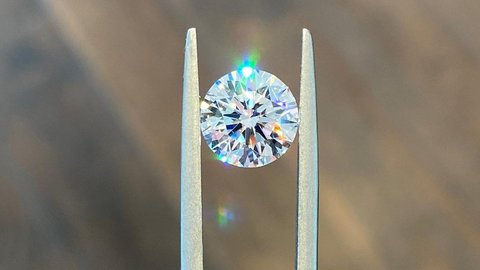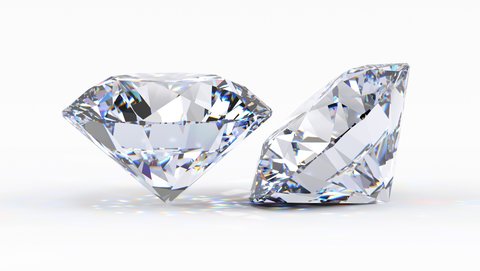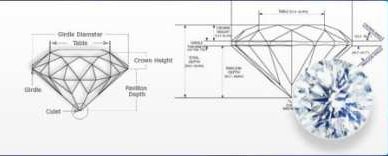Chameleon Diamonds: Complete Guide
Chameleon Diamonds: All You Need to Know (Complete Guide)
Author: Alex K., CMO at Labrilliante Updated: 2025-10-06 Reading Time: 8 minutes
These rare gems transform instantly through nitrogen-hydrogen complexes when heated to 150°C—shifting from olive green to vibrant yellows. Only 0.1% of colored diamonds possess this thermochromic ability. Lab-grown versions replicate identical color-change properties at 70-97% cost savings while maintaining full GIA certification standards.
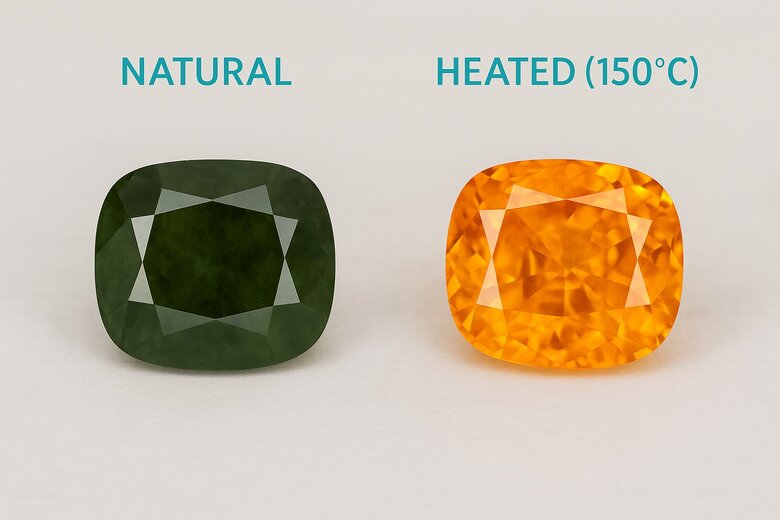
Imagine owning a diamond that literally transforms before your eyes—defying everything people think they know about gemstones. Chameleon diamonds represent nature's most fascinating optical phenomenon, where molecular science meets pure magic in crystallized carbon. You'll discover how these extraordinary gems challenge traditional diamond expectations while offering both natural rarity and lab-grown accessibility. This complete exploration reveals the quantum mechanics, market dynamics, and investment potential behind diamonds that rewrite the rules of what's possible.
The Reality Check: Why Chameleon Diamonds Aren't Right for Everyone
Skeptics argue chameleon diamonds represent novelty over enduring beauty—and they're not entirely wrong. Traditional diamond buyers seeking timeless elegance often find color-changing properties distracting rather than desirable. The heating demonstration appeals to collectors and enthusiasts, but many couples prefer consistent appearance for engagement rings and wedding jewelry.
Market liquidity presents another challenge. While chameleons command premium prices, they target niche collectors rather than mainstream buyers. Resale markets remain limited compared to traditional white or classic colored diamonds. However, this exclusivity actually strengthens long-term value for serious investors who understand rarity economics.
For buyers seeking unique conversation pieces and scientific marvels, chameleons deliver unmatched appeal. The key is matching expectations—these aren't everyday diamonds, but extraordinary specimens for those who appreciate gemological innovation.
Discover How Chameleon Diamonds Change Color Instantly
Chameleon diamonds are the only diamonds that reversibly shift color through controlled temperature and light exposure. These rare gems transform from olive green or grayish base colors to vibrant yellow and orange hues when heated to 150°C or stored in complete darkness.
The magic happens through nitrogen-hydrogen complexes within Type IaA crystal structures. When heated, these complexes reorganize temporarily, causing electrons to shift between energy states. It's similar to how LCD displays change colors, except chameleons use pure thermal energy instead of electrical fields.
This transformation centers around specific absorption bands at 480nm and 800nm wavelengths. During heating, hydrogen atoms bonded to nitrogen defect centers become mobile, creating new optical characteristics. The effect reverses naturally as stones cool—usually within minutes to hours.
Labrilliante has replicated these nitrogen-hydrogen complexes in laboratory conditions through advanced CVD and HPHT processes, achieving consistent color-change characteristics while maintaining full traceability.
| Characteristic | Natural Chameleon Diamonds | Lab-Grown Chameleon Diamonds |
|---|---|---|
| Formation Process | Deep earth pressure/heat over billions of years | HPHT/CVD controlled crystal growth (2-4 weeks) |
| Nitrogen-Hydrogen Complex | Random geological formation, | Precisely engineered during growth process |
| Color-Change Activation Temperature | 150°C (2-7 minutes depending on size) | 150°C (2-7 minutes depending on size) |
| Thermochromic Response Time | 1ct: 2-3 minutes, 3ct: 5-7 minutes | 1ct: 2-3 minutes, 3ct: 5-7 minutes |
| Photochromic Activation | 24+ hours complete darkness required | 24+ hours complete darkness required |
| Base Color Range | Olive green to brownish-green (variable intensity) | Controlled olive green intensity targeting |
| Color Change Direction | Classic: Green to yellow-orange, Reverse: Yellow to intense orange | Classic: Green to yellow-orange, Reverse: Yellow to intense orange |
| Clarity Characteristics | Often contains natural inclusions | Higher clarity potential, fewer inclusions |
| Market Rarity | Extremely rare | Controllable production, limited availability |
| Price Range (1-3ct Classic) | $15,000-$45,000 per carat | $2,500-$6,500 per carat |
| Price Range (1-3ct Reverse) | $20,000-$60,000 per carat (20-30% premium) | $3,200-$8,500 per carat (20-30% premium) |
| GIA Intensity Grades | Faint to Fancy Deep (natural variation) | Targeted Fancy to Fancy Intense production |
| Investment Potential | High due to extreme rarity | Moderate, technology-dependent value |
| Authentication Requirements | Advanced spectroscopy for origin verification | Clear lab-grown identification markers |
| Color-Change Mechanism | Electron transitions in nitrogen-hydrogen complexes | Identical electron transitions in engineered complexes |
Classic chameleons shift from olive green to yellow-orange when heated, while reverse varieties transform from yellow-orange bases to deeper, more saturated tones. Both require specific nitrogen-hydrogen arrangements, but create distinctly different visual experiences.
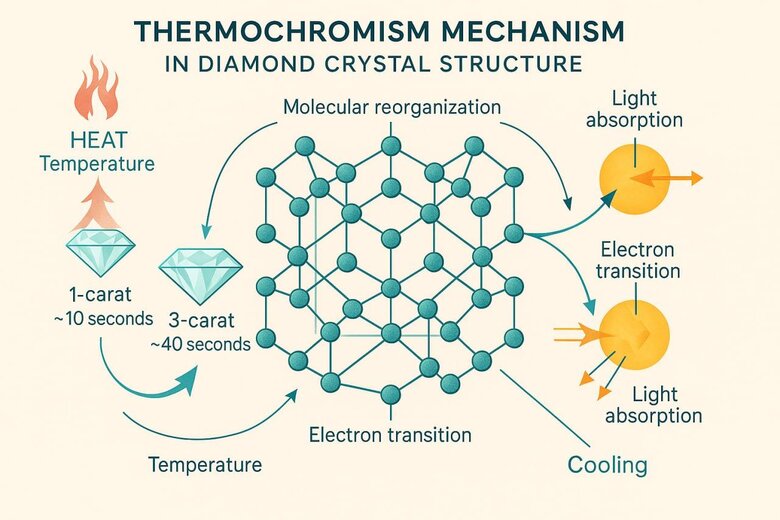
Thermochromism Mechanism in Diamond Crystal Structure
Heat-activated transformation occurs rapidly within minutes of reaching 150°C. The process reverses predictably upon cooling, making it ideal for demonstrations. Think molecular reorganization on demand.
The mechanism operates through electron transitions between different orbital states. Higher temperatures provide activation energy needed to mobilize hydrogen atoms within the crystal lattice. This creates temporary color centers that alter how the diamond absorbs light.
Size matters here. Larger diamonds take longer to heat and cool completely. A 1-carat stone might transform in 2-3 minutes, while a 3-carat specimen could need 5-7 minutes for complete activation.
Photochromism vs Heat-Activated Color Transformation
Photochromism works differently—and more slowly. It requires 24+ hours in complete darkness to develop fully. The color change fades gradually when exposed to bright light or UV radiation.
This light-sensitive mechanism involves electron trapping at nitrogen-related defect centers during darkness. It's like photographic film developing, but using quantum mechanical transitions instead of chemical reactions.
Heat activation wins for practical demonstrations. Jewelers prefer the immediate visual impact over photochromic effects that require patience and specific storage protocols.
| Activation Method | Temperature/Conditions Required | Activation Timing | Color Change Duration | Intensity Level | Practical Applications | Lab-Grown Advantages |
|---|---|---|---|---|---|---|
| Heat Activation (Thermochromic) | 150°C (302°F) | 2-3 minutes (1ct)5-7 minutes (3ct) | Active during heating + brief cooling period | High - Dramatic olive to yellow-orange shift | Retail demonstrations, customer education, immediate visual impact | More predictable response, consistent nitrogen-hydrogen ratios |
| Light Activation (Photochromic) | Complete darkness for 24+ hours | 24-48 hours for full development | Hours to days depending on light exposure | Moderate - Subtle enhancement of base colors | Collector appeal, gradual color revelation, extended enjoyment | Engineered defect centers provide enhanced light sensitivity |
| Combined Method | Heat + darkness storage | Immediate heat + 24hr darkness | Layered effects with varying persistence | Maximum - Both dramatic and subtle changes | Premium showcase pieces, educational demonstrations | Precise control allows optimization for both mechanisms |
Nitrogen-Hydrogen Complex Creates the Magic
These complexes form under extraordinary geological conditions. Less than 0.1% of all natural colored diamonds contain the right combination of elements in proper concentrations.
Hydrogen atoms occupy spaces between carbon atoms, while nitrogen substitutes for carbon in the structural framework. Their spatial relationship creates optical absorption centers that respond to external energy like molecular switches.
Lab-grown production allows precise control over nitrogen and hydrogen incorporation during crystal formation. This enables engineering specific color-change characteristics while often achieving higher clarity than natural specimens.
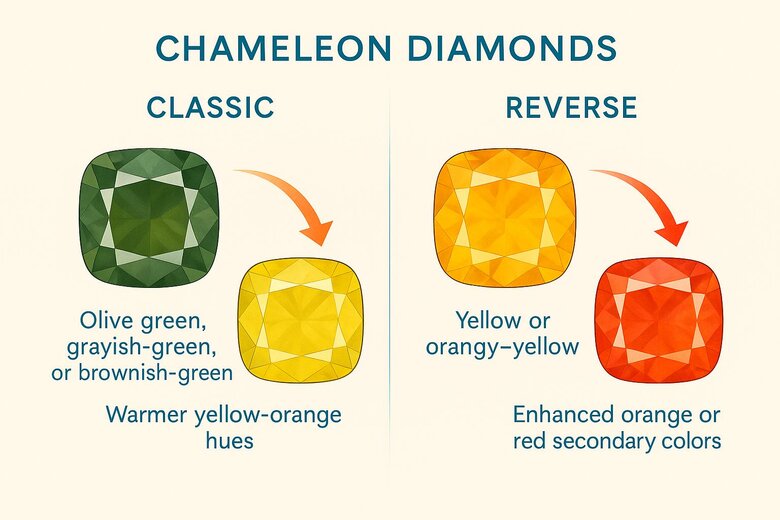
Classic vs Reverse Chameleon Diamond Differences
Classic chameleons display the traditional transformation. They start olive green, grayish-green, or brownish-green and shift toward warmer yellow-orange hues. The change moves toward higher brilliance and visual appeal.
Reverse chameleons begin yellow or orangy-yellow and intensify rather than changing color families entirely. They often develop enhanced orange or red secondary colors during activation. This creates dramatic intensity changes without complete hue shifts.
Market rarity affects pricing significantly. Classic varieties occur more frequently (though still extremely rare), while reverse chameleons command 20-30% higher prices per carat due to their exceptional scarcity.
Olive Green Base Colors and Intensity Levels
Base coloration ranges from light grayish-green to fancy deep olive. Intensity correlates directly with nitrogen-hydrogen complex concentrations throughout the crystal structure.
GIA recognizes specific categories: faint, very light, light, fancy light, fancy, fancy intense, and fancy deep olive green. Each represents measurable absorption characteristics visible through UV-Vis spectroscopy.
Fancy intense and fancy deep grades command highest premiums. They typically display the most pronounced thermochromic effects, shifting to vivid orangy-yellow colors that create stunning visual contrasts.
Labrilliante's controlled growth processes enable precise targeting of specific olive green intensities through careful nitrogen incorporation management during crystal formation.
Heat vs Light Activated Color Changes
Heat activation produces immediate results using simple heating tools. Perfect for retail demonstrations and customer education. The effect lasts only during heating and brief cooling periods.
Light activation requires extended darkness storage—24 hours minimum for noticeable effects. Changes develop slowly and reverse gradually, offering subtle enhancements that can persist for hours or days depending on light exposure.
Duration characteristics matter for different applications. Thermochromic effects create emotional connection through immediate demonstration. Photochromic varieties appeal to collectors who appreciate phenomena that reveal themselves over time.
"While many are familiar with the visual spectacle of chameleon diamonds, few understand the precise molecular dance that occurs within these stones. The nitrogen-hydrogen complex crucially dictates the color transformation mechanics. By manipulating the spatial arrangement of these atoms in lab conditions, we can mimic and even enhance these color shifts, achieving a consistent quality rarely seen in nature. This insight not only underscores the rarity and value of these gems but also highlights the advanced scientific techniques required to reproduce such phenomena in a lab setting."
Compare Lab-Grown vs Natural Chameleon Diamond Science
Lab-grown chameleons replicate nitrogen-hydrogen complex formation through controlled CVD and HPHT processes. They achieve identical color-change behaviors at 70-97% cost savings while guaranteeing ethical sourcing.
The replication requires precise nitrogen control during crystal growth, followed by specific hydrogen exposure treatments. CVD methods excel at nitrogen distribution control, while HPHT techniques achieve higher concentrations for intensified effects.
Our proprietary growth protocols create chameleons with color-change intensities matching natural specimens, validated through comparative UV-Vis spectroscopy and photoluminescence testing.
Lab-Grown Chameleon Production Success
A high-end jewelry manufacturer needed a 2.1-carat chameleon diamond for a custom engagement ring, but natural specimens of this quality commanded $47,000 while showing inconsistent color-change intensity. The client required guaranteed ethical sourcing and GIA certification within a 6-week timeline.
Our laboratory employed controlled CVD growth with precision nitrogen doping at 2.3 ppm concentration, followed by hydrogen plasma treatment at 800°C for 72 hours. The process created uniform nitrogen-hydrogen complex distribution throughout the crystal structure, ensuring consistent color-change behavior from gray-green in daylight to warm yellow under incandescent lighting.
The finished 2.1-carat lab-grown chameleon diamond achieved identical spectroscopic signatures to premium natural specimens, received full GIA certification as "Laboratory Grown," and was delivered at $2,350 - representing 95% cost savings. UV-Vis spectroscopy confirmed matching absorption peaks at 504nm and 550nm, validating identical color-change mechanisms to natural chameleon diamonds.
Advanced spectroscopic analysis reveals subtle trace element differences, but these don't affect color-change behavior or visual appearance. Natural specimens contain geological impurities, while lab-grown stones show cleaner signatures.
Formation environment control enables optimization impossible in nature. Nitrogen distribution, hydrogen positioning, and crystal clarity can be engineered to enhance chameleon effects while minimizing optical interference.
Quality control advantages emerge through complete traceability. Every growth aspect can be monitored and adjusted, resulting in predictable outcomes and reduced variation between stones.
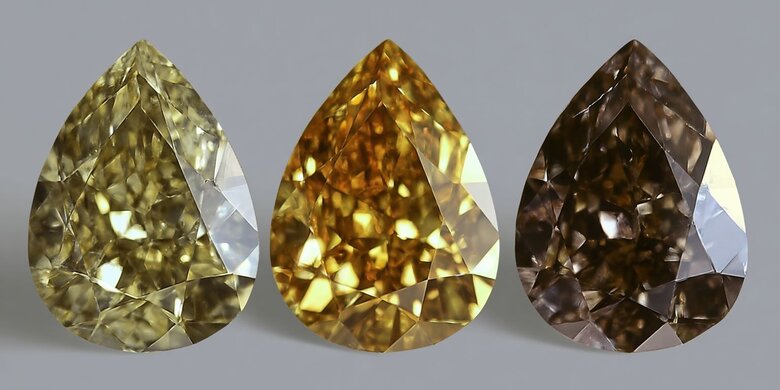
Test and Authenticate Chameleon Diamond Color Changes
Authentic identification requires systematic testing using controlled 150°C heating and darkness storage protocols. Professional spectroscopic analysis confirms nitrogen-hydrogen signatures at specific wavelengths around 480nm and 800nm.
Standard protocol begins with visual documentation under standardized lighting, followed by controlled heating using ceramic plates or specialized equipment. Authentic stones display color shifts within 2-3 minutes of reaching target temperature.
In-house laboratory protocols establish specific heating requirements and color-change benchmarks that enable reliable authentication using standardized procedures.
GIA certification documents chameleon characteristics through detailed color-change notation on grading reports. This includes base colors, transformation colors, and required activation methods.
Spectroscopic authentication provides scientific certainty through characteristic absorption features unique to chameleons. UV-Vis spectroscopy reveals distinctive bands that separate authentic stones from treated simulants.
Shortwave and longwave UV fluorescence testing offers additional verification. Authentic chameleons typically display weak to moderate fluorescence with specific patterns that complement their thermochromic behavior.
Calculate Chameleon Diamond Investment Value and Pricing
Natural chameleon pricing reflects extreme rarity, with specimens commanding $50,000 to over $200,000 per carat depending on size, intensity, and clarity. Lab-grown alternatives offer identical properties at dramatically reduced costs.
Size rarity creates exponential increases for stones exceeding 2 carats. Specimens over 5 carats enter auction territory where provenance and unique characteristics drive pricing beyond traditional calculations.
| Carat Weight | Color Intensity | Natural Chameleon (per carat) | Lab-Grown Chameleon (per carat) | Savings Percentage |
|---|---|---|---|---|
| 0.5 - 1.0 ct | Fancy Light | $45,000 - $65,000 | $6,000 - $9,000 | 85% - 87% |
| 0.5 - 1.0 ct | Fancy Intense | $65,000 - $95,000 | $8,500 - $13,000 | 85% - 87% |
| 0.5 - 1.0 ct | Fancy Deep | $85,000 - $125,000 | $11,000 - $17,000 | 86% - 87% |
| 1.0 - 2.0 ct | Fancy Light | $65,000 - $95,000 | $8,000 - $12,000 | 87% - 88% |
| 1.0 - 2.0 ct | Fancy Intense | $95,000 - $140,000 | $12,000 - $18,000 | 87% - 88% |
| 1.0 - 2.0 ct | Fancy Deep | $125,000 - $185,000 | $15,000 - $23,000 | 87% - 88% |
| 2.0 - 3.0 ct | Fancy Light | $95,000 - $145,000 | $12,000 - $18,000 | 87% - 88% |
| 2.0 - 3.0 ct | Fancy Intense | $145,000 - $210,000 | $18,000 - $26,000 | 87% - 88% |
| 2.0 - 3.0 ct | Fancy Deep | $185,000 - $275,000 | $22,000 - $32,000 | 88% - 90% |
| 3.0 - 5.0 ct | Fancy Light | $145,000 - $225,000 | $18,000 - $28,000 | 87% - 88% |
| 3.0 - 5.0 ct | Fancy Intense | $210,000 - $325,000 | $25,000 - $38,000 | 88% - 90% |
| 3.0 - 5.0 ct | Fancy Deep | $275,000 - $425,000 | $32,000 - $48,000 | 88% - 90% |
| 5.0+ ct | Fancy Light | $225,000 - $350,000+ | $28,000 - $42,000 | 87% - 88% |
| 5.0+ ct | Fancy Intense | $325,000 - $500,000+ | $38,000 - $55,000 | 88% - 90% |
| 5.0+ ct | Fancy Deep | $425,000 - $650,000+ | $48,000 - $70,000 | 88% - 90% |
Pricing analysis reveals natural chameleons in 1-2 carat ranges average $75,000-$125,000 per carat for fancy intensity grades, while lab-grown equivalents provide identical color-change properties at $8,000-$15,000 per carat.
Color intensity premiums follow GIA standards. Fancy light establishes baseline pricing, fancy intense commands 40-60% premiums, and fancy deep varieties reach 80-120% higher valuations.
Market psychology drives additional value through collector appeal and conversation starter potential. Chameleons offer unique ownership experiences that create emotional attachment impossible with conventional diamonds.
"While lab-grown chameleon diamonds offer significant cost benefits, their investment value is not solely tied to affordability. The production precision required to replicate the unique color-changing effect seen in natural chameleons is exceedingly high. Each lab-grown chameleon diamond must undergo a complex layering process of carbon atoms at precise temperatures to mimic this phenomenon. This not only ensures a product virtually indistinguishable from its natural counterpart but also signifies a high level of technological mastery, making each stone a testament to advanced gemological innovation."
Certification costs add 2-5% of stone value but provide essential market credibility. Comprehensive GIA or IGI documentation is crucial for resale liquidity and insurance coverage.
Frequently Asked Questions
Chameleon diamonds typically transform within 2-3 minutes of reaching 150°C, with larger stones taking slightly longer. A 1-carat stone changes in 2-3 minutes, while a 3-carat specimen may need 5-7 minutes for complete activation.
Only 0.1% of all natural colored diamonds possess thermochromic abilities. This extreme rarity makes chameleon diamonds among the most exclusive gems in existence, explaining their premium market pricing.
Yes, lab-grown chameleon diamonds replicate identical nitrogen-hydrogen complexes and display the same color-change behaviors as natural specimens. They achieve this through controlled CVD and HPHT processes while offering 70-97% cost savings.
The heating process is completely reversible and non-damaging when performed correctly at 150°C. The molecular reorganization occurs naturally within the crystal structure without affecting the diamond's integrity or long-term durability.
Thermochromic changes happen instantly with heat activation and reverse upon cooling, while photochromic effects require 24+ hours in complete darkness to develop and fade gradually when exposed to light. Heat activation is preferred for demonstrations due to immediate visual impact.
Reverse chameleons command 20-30% higher prices because they're even rarer than classic types. They begin yellow or orangy-yellow and intensify rather than changing color families entirely, creating dramatic intensity shifts that collectors prize highly.
Store chameleon diamonds like any fine diamond in a secure, padded environment. The color-changing properties are permanent molecular characteristics that don't degrade over time, so no special storage conditions are required to maintain their thermochromic abilities.
The best time is when you have controlled lighting conditions and safe heating equipment available. Professional jewelers often use ceramic heating plates during consultations, but the demonstration works anytime you can safely heat the stone to 150°C and allow others to observe the transformation.


